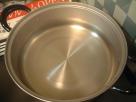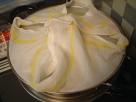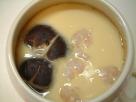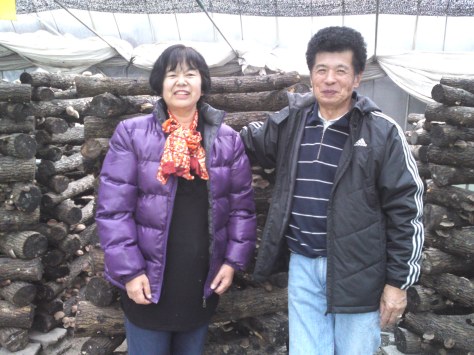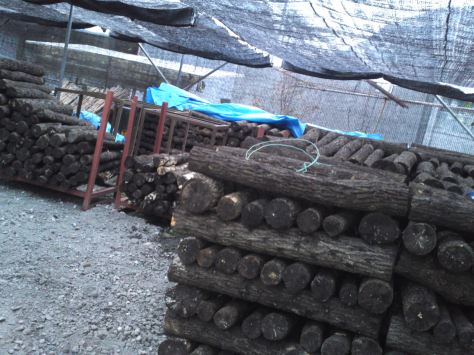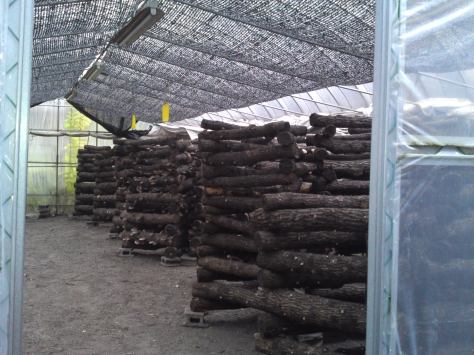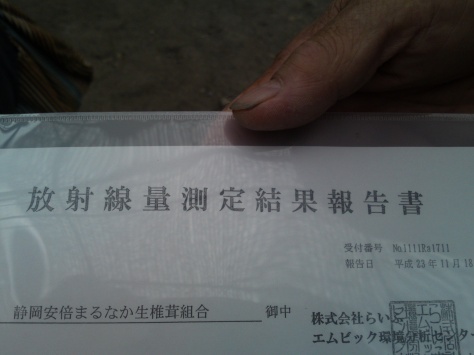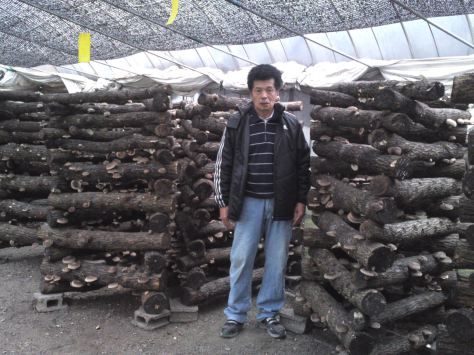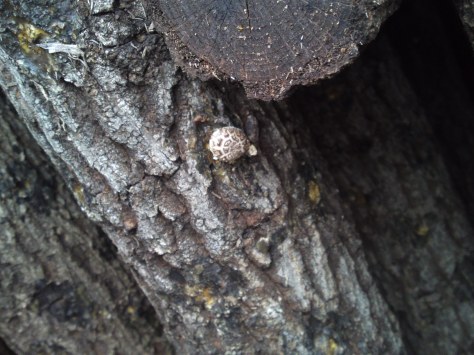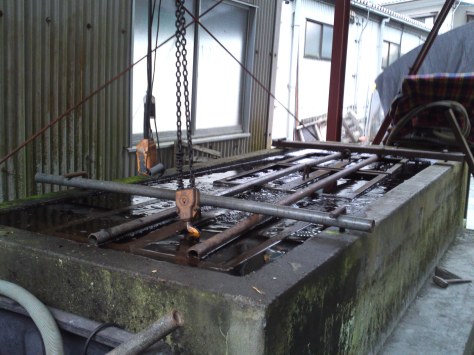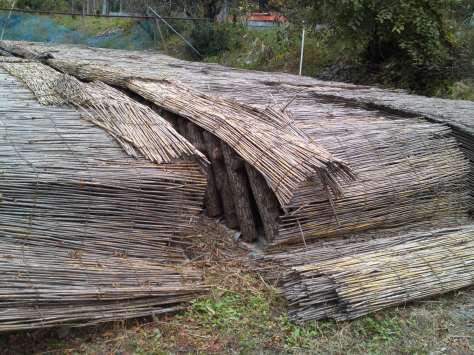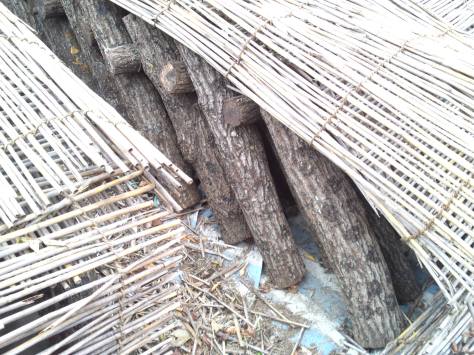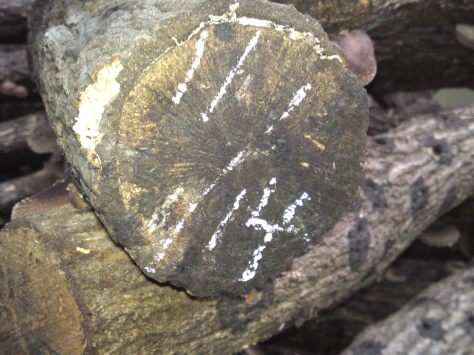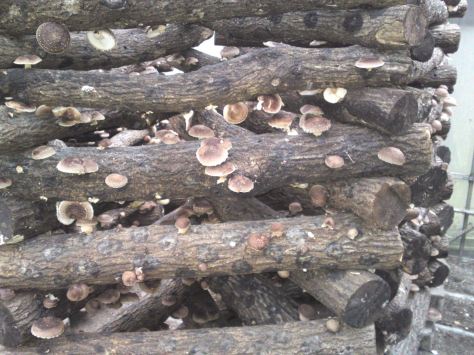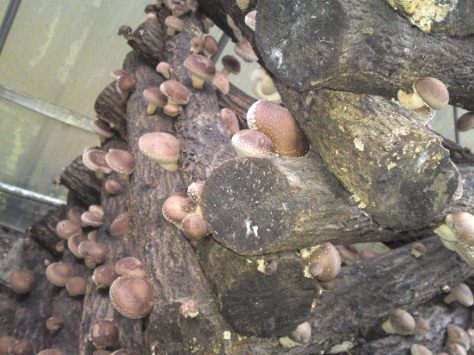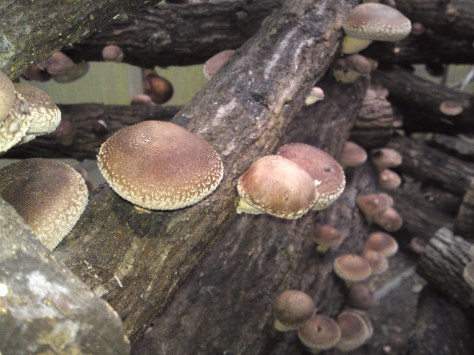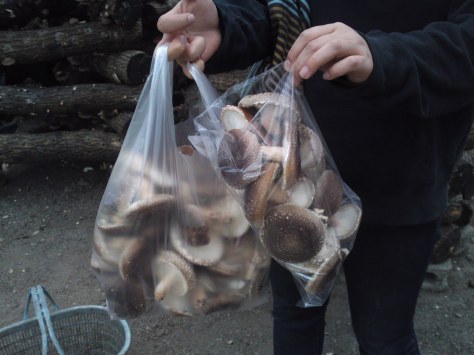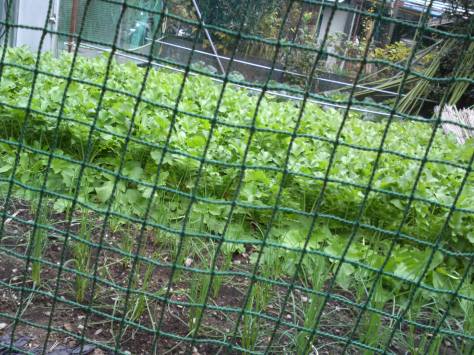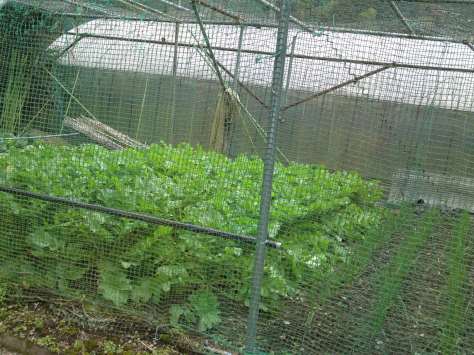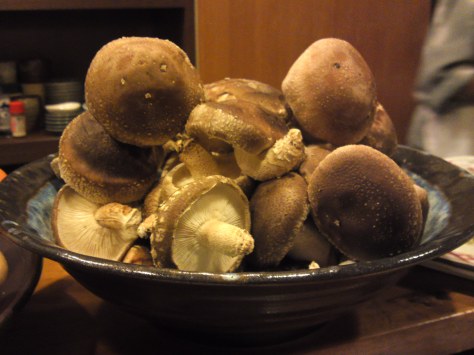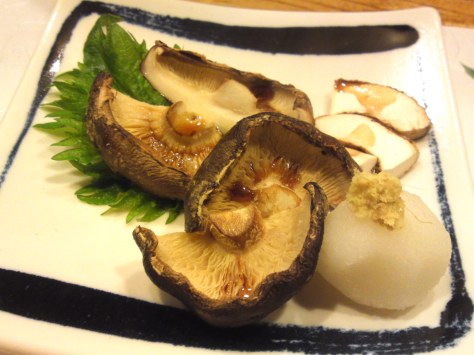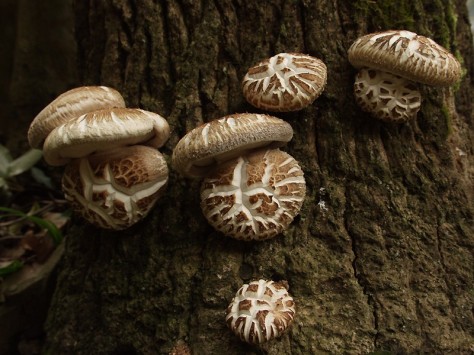The Japanese not only make great tamagoyaki/omelettes but extensively use eggs for decoration, especially in sushi and salads.
One such decoration is omelette ribbons.
Here is the basic recipe that could help you with future ideas!
Japanese Omelette ribbons!
INGREDIENTS:
-Eggs
-Oil
RECIPE:
-Having beaten the eggs, sieve/filter them through a large piece of gaze (this is the little secret!) into another bowl as shown on picture above.
Organize yourself so as not to spill egg everywhere. Use large bowls and plenty of gaze!
No need to season the eggs as the thin size of the ribbons will facilitate the absorption of any environmental seasoning.
-Use a square or rectangular non-stick tamagoyaki frypan.
Pour and spread a small quantity of oil.
Pour the eggs into a thin layer.
Bear in mind that the oil needs not to be so hot or the eggs will “crackle”.
Also bear in mind that not enough egg will not spread evenly all over the surface of the frypan. Not enough or too much will end in failure. Practice will soon make you a master!
-One more reason the omelette ought to be thick enough is that, when you turn it over with a long chopstick as shown on above picture, it will not break up.
-Fry both sides.
-Spread the omelette sheet on a working table while you eventually fry more.
-First cut the sheet into wide strips/bands. Think about the eventual lenghth of your ribbons.
-Finally cut across into thin ribbons.
-Enjoy the fun of easy decoration later!
RECOMMENDED RELATED WEBSITES
Mummy I Can Cook! by Shu Han in London
Pierre.Cuisine, Francescannotwrite, My White Kitchen, 47 Japanese Farms Through The Eyes of Its Rural Communities, Foodhoe, Chucks Eats, Things that Fizz & Stuff, Five Euro Food by Charles,Red Shallot Kitchen by Priscilla,With a Glass, Nami | Just One Cookbook, Peach Farm Studio, Clumsyfingers by Xethia, PepperBento,Adventures in Bento Making, American Bent, Beanbento, Bento No, Bento Wo Tsukurimashou, Cooking Cute, Eula, Hapabento , Happy Bento, Jacki’s Bento Blog, Kitchen Cow, Leggo My Obento, Le Petit Journal Bento & CO (French), Lunch In A Box,
Susan at Arkonlite, Vegan Lunch Box; Tokyo Tom Baker, Daily Food Porn/Osaka, Only Nature Food Porn, Happy Little Bento, The Herbed Kitchen, J-Mama’s Kitchen, Cook, Eat, Play, Repeat, Bento Lunch Blog (German), Adventures In Bento, Anna The Red’s Bento Factory, Cooking Cute, Timeless Gourmet, Bento Bug, Ideal Meal, Bentosaurus, Mr. Foodie (London/UK), Ohayo Bento,
Must-see tasting websites:
-Sake: Tokyo Through The Drinking Glass, Tokyo Foodcast, Urban Sake, Sake World
-Wine: Palate To Pen, Warren Bobrow, Cellar Tours, Ancient Fire Wines Blog
-Beer: Good Beer & Country Boys, Another Pint, Please!
-Japanese Pottery to enjoy your favourite drinks: Yellin Yakimono Gallery
















